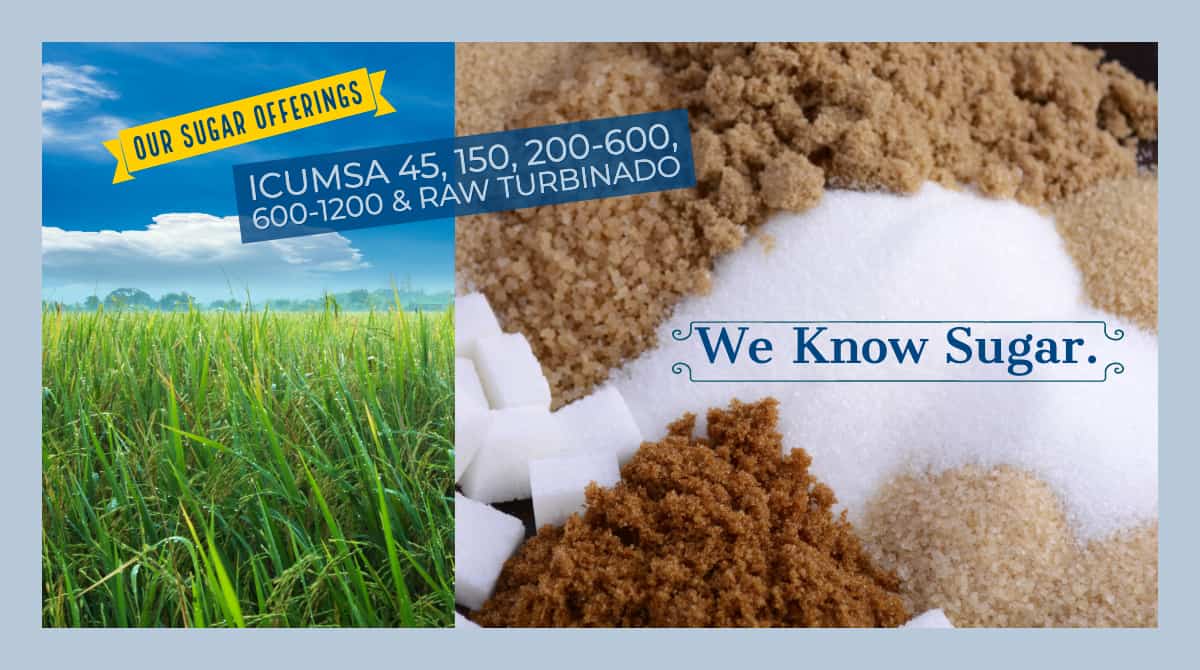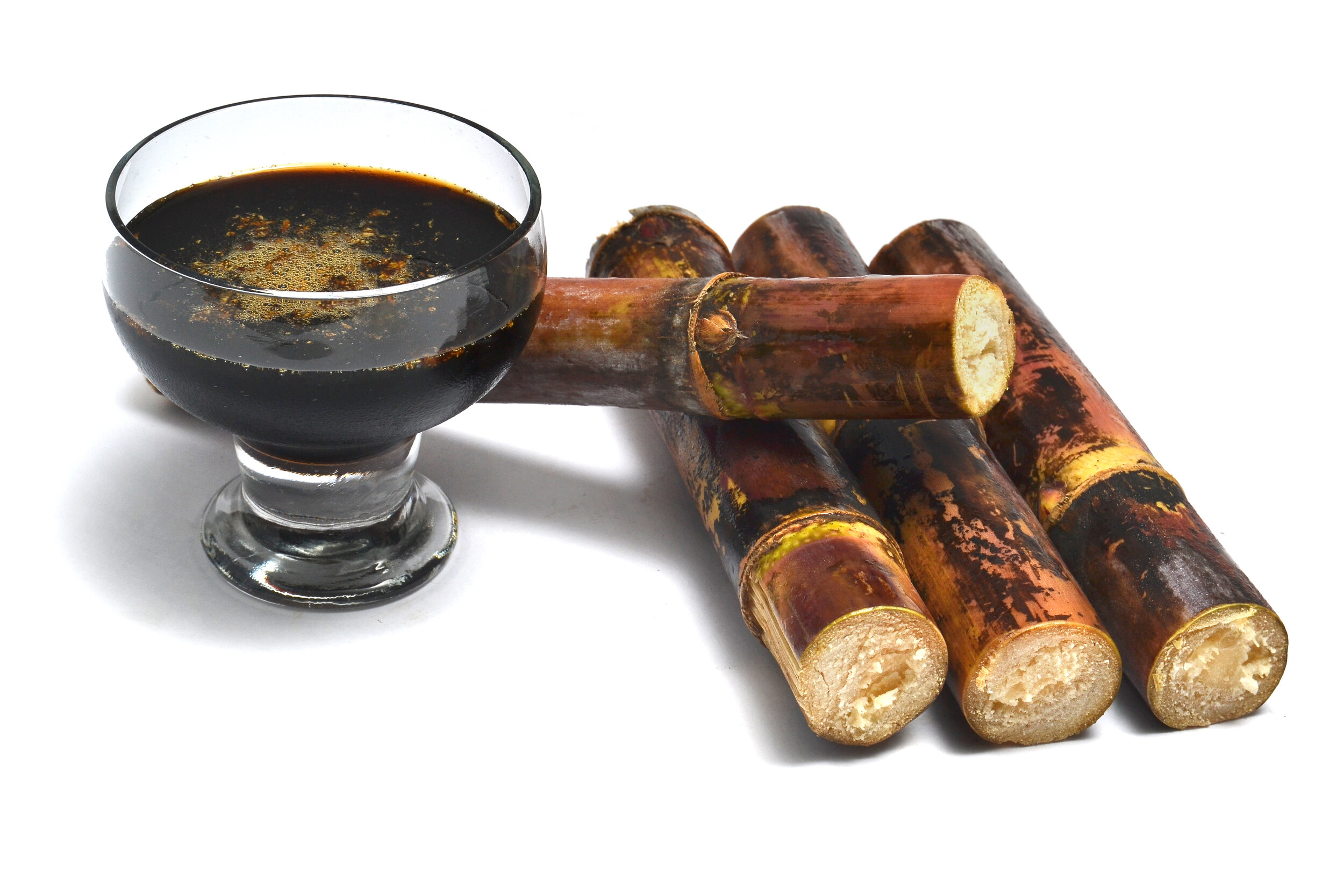Introducing the Manufacturing Tricks Behind Sugar Cane and Its Diverse Variety Of Products
The manufacturing journey of sugar cane is intricate and multi-faceted. It begins in the areas, where careful harvesting strategies set the stage for ideal sugar extraction. The procedure involves numerous stages, consisting of juice extraction and refining - sugar cane products. However, sugar cane's potential expands much beyond simple sweetness. Developments in handling and lasting methods are improving its role in modern-day industries. What exists in advance for this flexible crop? The responses might stun those curious about its future
The Journey of Sugar Cane: From Field to Manufacturing facility

As sugar cane guides delicately in the exotic wind, it begins a transformative journey from area to manufacturing facility. The lively environment-friendly stalks, abundant in sucrose, are grown under suitable conditions, gaining from sufficient sunlight and rains. Farmers very carefully check the growth, guaranteeing the plants reach their peak maturity, which is essential for optimizing sugar content.Once developed, the cane is planned for harvesting, where its fibrous structure holds the guarantee of wonderful items. The journey proceeds as the stalks are moved to refining centers, where they undergo a series of precise steps. At the manufacturing facility, the cane is washed, shredded, and pushed to remove the juice. This juice is after that made clear and evaporated, leading the method for crystallization. Each phase of this trip is essential, as it eventually establishes the high quality of the sugar and other products originated from this flexible plant.
Gathering Strategies: The Primary Step in Production
Gathering sugar cane needs accuracy and skill, as the timing and strategy directly influence the quality of the last item. The process typically begins with determining the ideal harvest time, which is crucial; sugar web content peaks prior to the plant reaches full maturation. Farmers commonly count on experience and farming signs to decide when to harvest.Two main strategies dominate the collecting landscape: guidebook and mechanical techniques. Hand-operated harvesting, though labor-intensive, enables cautious selection of stalks and lessens damage. Workers make use of machetes to reduce the cane near the base, guaranteeing the stalks continue to be undamaged for processing.Mechanical harvesting, on the various other hand, uses customized tools to reduce and accumulate the cane quickly. While this method greatly increases efficiency, it may bring about greater degrees of particles and reduced sugar content. Inevitably, the picked strategy influences not just the quantity but likewise the high quality of sugar cane supplied to processing centers.
The Removal Refine: Unlocking the Sweet taste
The removal procedure is essential for transforming harvested sugar cane right into wonderful juice. Different techniques of juice removal can significantly influence the top quality and return of the final product. Comprehending these techniques is necessary for maximizing the advantages of sugar cane production.
Harvesting Methods Explained
Launching the sweet taste of sugar cane starts with precise harvesting techniques that guarantee optimal return and top quality. The procedure typically entails reducing the cane at ground degree, making sure minimal damages to the plant and enabling regrowth. Harvesters frequently make use of machetes or specialized makers, depending on the scale of the procedure. Timing is essential; gathering occurs when the sugar content reaches its optimal, usually throughout completely dry periods. In addition, workers must be trained to recognize the very best stalks, staying clear of those that are as well old or diseased. Efficient transport to refining facilities is additionally vital, as hold-ups can lead to sugar deterioration (sugar cane products). These precise methods ultimately lay the foundation for generating premium sugar and its varied byproducts
Juice Extraction Approaches
Juice removal is a vital action in changing sugar cane right into its wonderful significance. This procedure usually includes numerous methods, each developed to effectively remove the sweet fluid from the fibrous stalks. One of the most usual technique is milling, where the sugar cane is smashed in between heavy rollers to launch the juice. Another technique is diffusion, which uses warm water to liquify the sugar from the cane fibers, making it a more efficient choice for large-scale procedures. In addition, some producers use screw presses, which apply mechanical pressure to extract juice. After extraction, the juice undergoes clarification to get rid of impurities before more processing. Each technique reflects the market's concentrate on optimizing yield and making certain top notch sugar manufacturing.
Refining Sugar: Changing Raw Cane Into Granulated Gold
The refining process is important for converting raw cane sugar into the pure, granulated product consumers recognize. sugar cane products. This entails a series of extraction and filtration steps to eliminate impurities, adhered to by condensation and drying out methods that enhance the sugar's top quality. Recognizing these methods exposes the elaborate improvement from cane to the golden granules that sweeten plenty of foods and beverages
Extraction and Purification Process
An important phase in the sugar production journey entails the removal and filtering of juice from freshly gathered sugar cane. This process begins with crushing the cane to launch its wonderful juice, generally making use of big rollers or mills. The drawn out juice includes not only sugar More Bonuses but also impurities, consisting of fibers and mud. To guarantee the juice is suitable for more refining, it goes through a purification procedure. This includes passing the juice with various filters and clarifiers to get rid of solid particles and undesirable materials. Chemicals such as lime might be contributed to assist in the information process. The outcome is a clear, raw cane juice that works as the foundation for producing refined sugar, prepared for succeeding phases of handling.

Condensation and Drying Out Methods
After the extraction and filtering procedures produce clear raw cane juice, the next step in sugar manufacturing is crystallization. This process involves boiling the juice to evaporate water, permitting sugar molecules to develop crystals. As the fluid thickens, it reaches supersaturation, prompting sugar to take shape. The blend is then cooled, promoting further crystal formation. Once condensation is full, the sugar crystals are divided from the remaining syrup with centrifugation.The last involves drying, where the crystals are revealed to cozy air to remove recurring moisture. This step is necessary, as it assures the product attains the desired granulation and rack security. The outcome is pure, granulated sugar, all set for product packaging and distribution.
Beyond Sweet Taste: Diverse Products From Sugar Cane
While sugar cane is mainly identified for its pleasant flavor, its flexibility extends far past simple sweetness. This resilient plant serves as the source for a myriad of items that deal with varied sectors. Ethanol, originated from sugar cane fermentation, plays an important function in renewable resource, serving as a cleaner alternative to nonrenewable fuel sources. Furthermore, molasses, a result of sugar refining, is utilized in animal feed, as well as in cooking and fermentation processes.Sugar cane's fibrous deposit, referred to as bagasse, is not thrown away; it is transformed right into biodegradable packaging products and acts as a biomass fuel source. Various sugars and syrups gotten from sugar cane locate applications in the food and beverage field, adding to flavoring and preservation. The plant's leaves can be used for thatching, while its juice is consumed as a renewing drink in many societies. Subsequently, sugar cane exhibits agricultural capacity past its sweet credibility.
Technologies in Sugar Cane Processing
As innovations in technology remain to improve different industries, sugar cane handling is experiencing a significant change. Modern innovations, including automated harvesting and accuracy agriculture, are enhancing efficiency and yield. Drones and sensing units monitor crop wellness, allowing farmers to enhance irrigation and nutrient application, inevitably boosting productivity.In handling centers, state-of-the-art equipment and devices streamline look at here now procedures. Advancements such as chemical handling and progressed purification methods enhance the extraction of sugar while reducing waste. In addition, the fostering of real-time data analytics enables suppliers to monitor procedures closely, making sure have a peek at this website high quality control and lowering downtime.Biotechnology is additionally playing an important duty; genetic engineerings boost sugar cane's resistance to parasites and ecological stressors. These innovations not only add to greater sugar yields however likewise help with the production of diverse by-products from the cane, increasing its industrial applications. In general, these advancements are leading the way for a more efficient and lasting sugar cane processing sector.
The Future of Sugar Cane: Sustainability and Bioproducts
The future of sugar cane manufacturing is progressively intertwined with sustainability and the advancement of bioproducts. As global demand for environment-friendly alternatives climbs, the sugar cane market is pivoting in the direction of methods that minimize environmental impact. Technologies in growing techniques, such as accuracy agriculture and integrated insect administration, aim to enhance return while reducing source consumption.Furthermore, sugar cane is being explored as a basic material for biofuels, bioplastics, and other lasting items. These bioproducts not only use a sustainable option to traditional fossil gas and plastics but additionally add to a circular economic climate by making use of waste materials.Research and advancement in biotechnology are leading the way for improved sugar cane selections that call for less water and fertilizers, better promoting sustainability. By welcoming these improvements, the sugar cane industry can safeguard its future while attending to vital environmental challenges, demonstrating its possible as a keystone of sustainable development.
Often Asked Inquiries
What Are the Environmental Effects of Sugar Cane Farming?
The environmental effects of sugar cane farming include deforestation, dirt deterioration, and water air pollution. Additionally, using pesticides can harm biodiversity, while monoculture methods lower ecological community resilience, posing long-lasting sustainability difficulties for farming techniques.

Exactly How Does Sugar Cane Contrast to Other Sweeteners Nutritionally?
Sugar cane, rich in carbohydrates, supplies energy but lacks crucial nutrients contrasted to alternatives like honey or syrup, which use vitamins and minerals. Its high glycemic index also elevates concerns over blood glucose spikes.
What Are the Health And Wellness Conveniences of Consuming Sugar Cane Products?
The wellness advantages of consuming sugar cane items consist of boosted digestion, improved energy degrees, and potential antioxidant residential properties. Furthermore, they may support hydration and offer necessary minerals and vitamins, adding favorably to general health.
How Is Sugar Cane Waste Utilized After Processing?
After processing, sugar cane waste is utilized in different ways, consisting of biofuel production, animal feed, and natural fertilizers. This sustainable strategy reduces ecological impact while optimizing source performance within the sugar market.
What Are the Historical Beginnings of Sugar Cane Cultivation?
